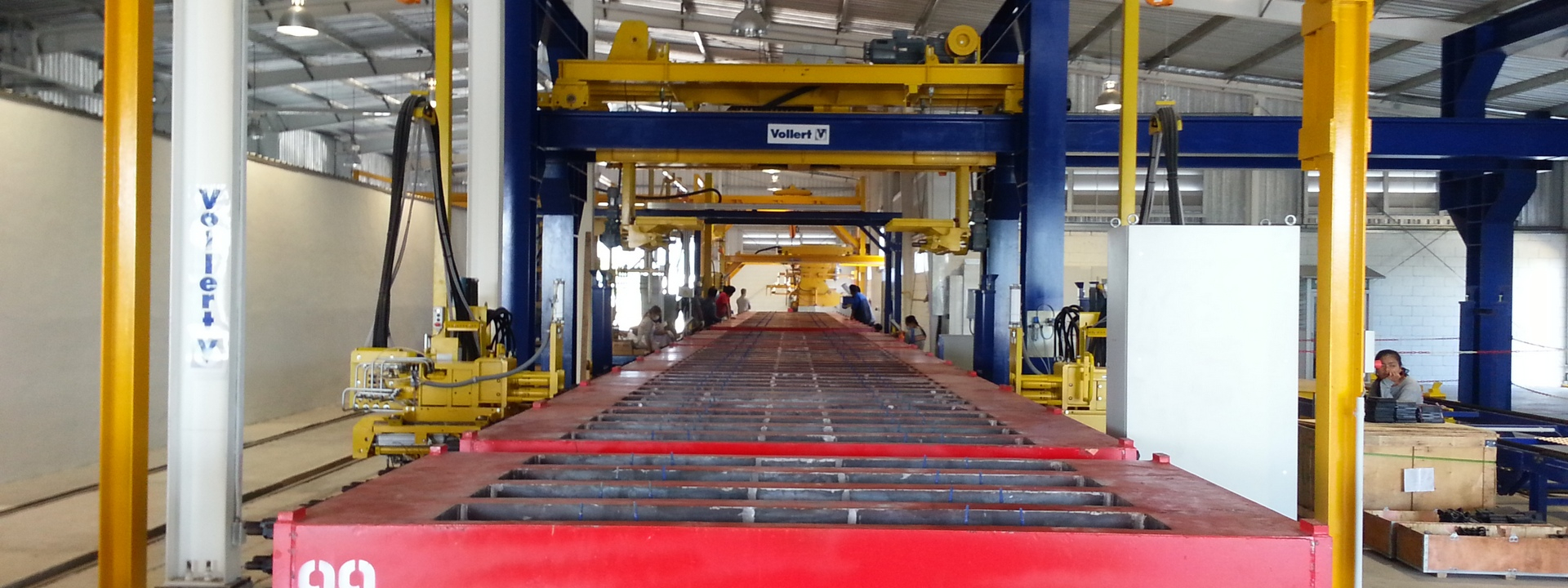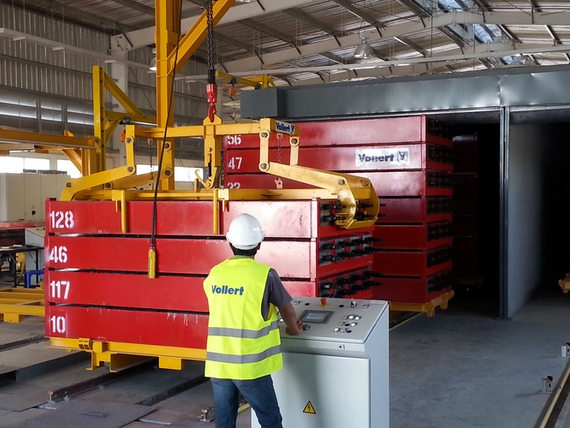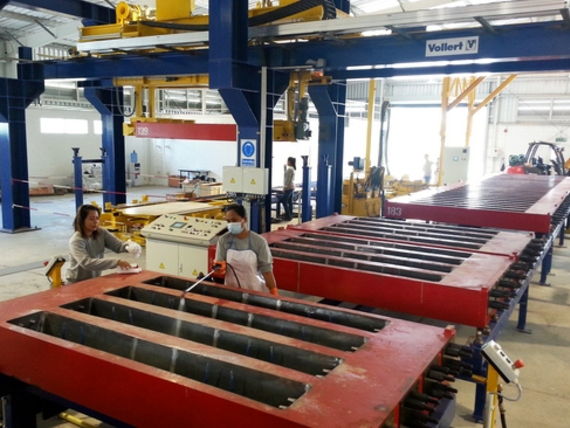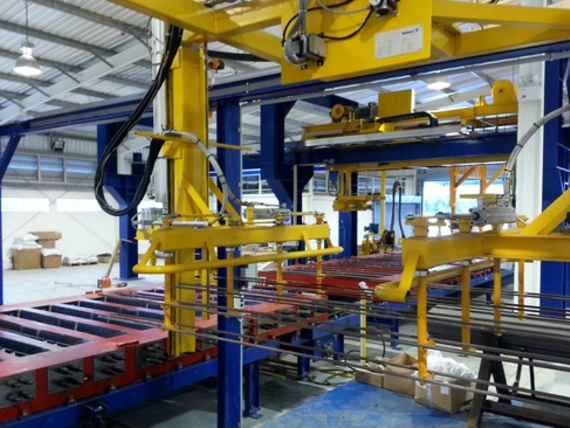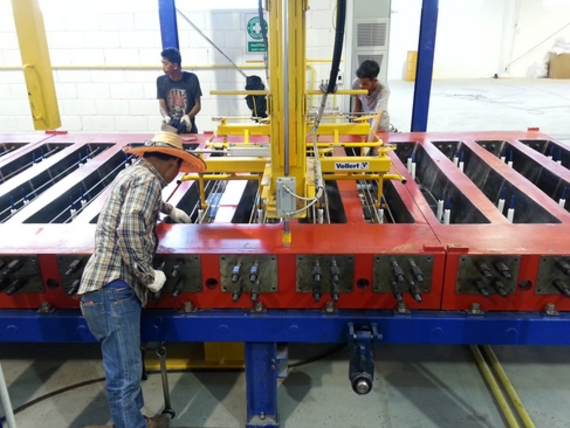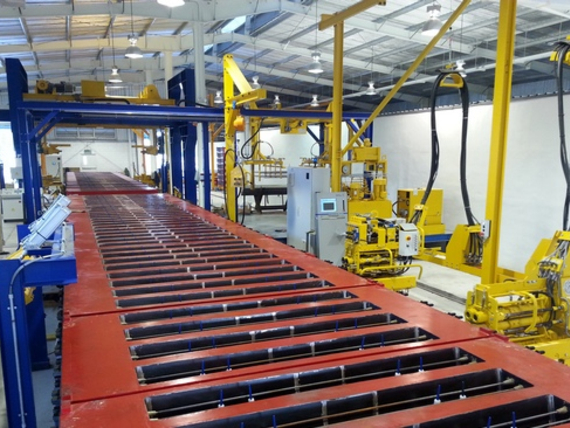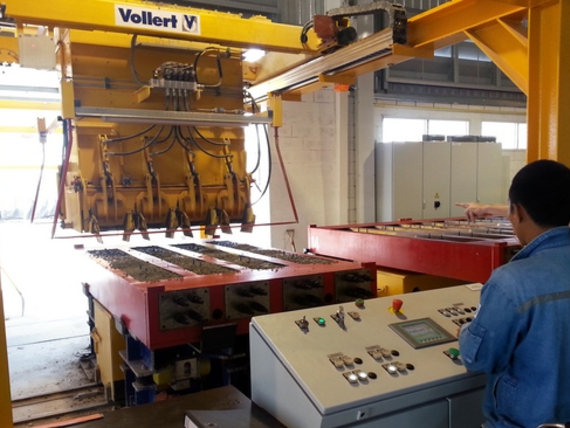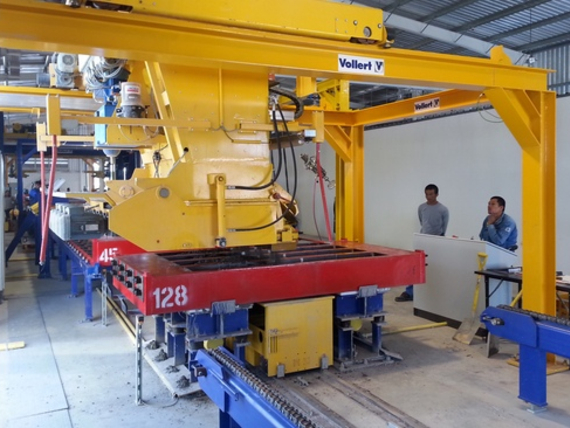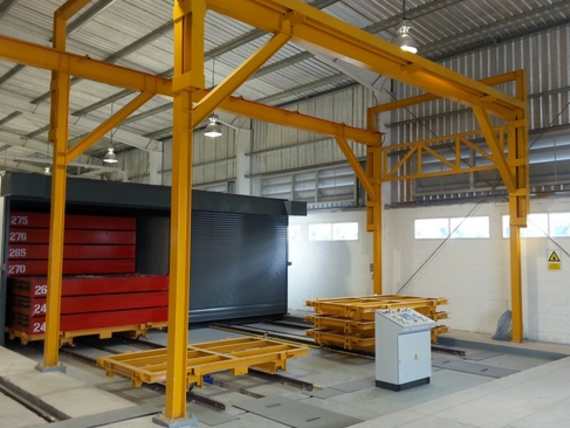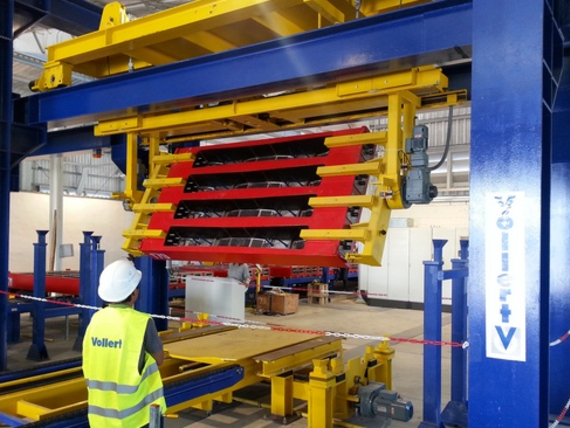The worldwide operative STRABAG construction group will deliver a total of 1.73 million railway sleepers in the next five years for the pending infrastructure projects for the development of the Thai transport network. Thailand has opted here to use prestressed concrete sleepers, which are increasingly replacing steel or timber sleepers. Concrete is more durable and requires less maintenance, in addition to which it is more environmentally friendly, since the use of creosote for impregnation is no longer necessary. "In order to produce the high output quantities, we decided to invest in a state-oft-the-art precast plant with intelligent circulation technology and innovative machine solutions, for which we held the groundbreaking ceremony in mid-2014 in a location 50 km southeast of Bangkok ", says Torsten Spangenberg, Head of Business Unit Railway Infrastructure at STRABAG. Vollert, one of the world's leading plant specialists in prestressed concrete railway sleeper production, was entrusted with the supply of the technology and know-how.
High automation and an intelligent plant structure
The modern plant circulation system is designed for a capacity of over 600,000 B70 prestressed concrete railway sleepers per year. That corresponds to a daily output of over 2,000 concrete sleepers. Up to 270 moulds circulate constantly, which ensures considerably more efficient production processes and thus higher plant productivity in comparison with stationary production.
"We rely on a high degree of automation, from the anchor assembly and the tensioning and detensioning stations to the concrete application. It is important to co-ordinate all processes optimally with one another so that no idling occurs and the machine technology operates smoothly", says Steffen Schmitt, Executive Sales Director Asia at Vollert. "This starts as early as the work preparation." The quadruple sleeper moulds are oiled and cleaned first after demoulding and before the installation of the anchors for the fastening of the rails later on. In order to operate ergonomically, the concrete mould is transferred from a roller conveyor onto a chain conveying system. The complete work area is thus freely accessible. In addition, safety mats are installed in this work area for high work safety. A reinforcement insertion manipulator subsequently places the prepared prestressing wires into the concrete mould. Once the individual wires have been fastened in the mould with the mounted tensioning and anchor bolts, the prestressing wires are semi-automatically prestressed with a tensioning force of 460 kN. The Paul screw tensioning press constantly monitors the tightening torque of each prestressing wire. Interconnected hub shuttles then lift the quadruple mould off the roller conveyor onto the combined concreting/vibrating station. The semi-automated concrete distributor moves along a bridge construction between the concrete mixing station in the outdoor area and the concreting line in the workshop area. Electrically driven discharge screws pour the concrete into the mechanically fixed mould with high precision. A high frequency vibrating station ensures homogeneous concrete compaction.
A special lifting traverse in the exit area of the concreting line subsequently stacks up to eight concrete moulds on one of the prepared cross-transport trucks. On the basis of pre-defined cycle times these rail-guided moulds drive on oven lines arranged in parallel through the lined heat chamber. Up to 1,600 concrete sleepers are to be found in the hardening process at the same time. In the exit area a chain pusher pulls one cross-transport truck at a time out of the hardening chamber following a hardening time of about 13 hours. The prestress release process is subsequently initiated via a semi-automated detensioning station from Paul. To do this the prestress is introduced into the concrete sleeper. "A highlight here is certainly the bridge-guided turnover spreader beam, which moves the detensioned concrete mould into an exit area, rotates it by 180 degrees and lowers it onto the roller track, before the demoulding process is performed by an electric lifting mechanism. A very efficient and economical solution", says Steffen Schmitt.
Permanently high quality level achieved
The railway sleepers are delivered completely ready for laying. For this the entire reinforcement is installed and prestressed according to the standards. The rail fastening is also ready installed. "A further important building block for the high quality level that we wanted to achieve", says Torsten Spangenberg from STRABAG. "Quality standards, for which we, the STRABAG Group, are responsible."
Apart from the desired high quality level, the output quantity required to achieve the 5-year order planning volume was attained through the high degree of automation, above all in the machine technology and in the circulation transport system, and an intelligent management system. And all of this in the extremely short time period of less than a half year from the first quotation to the first produced railway sleeper.

